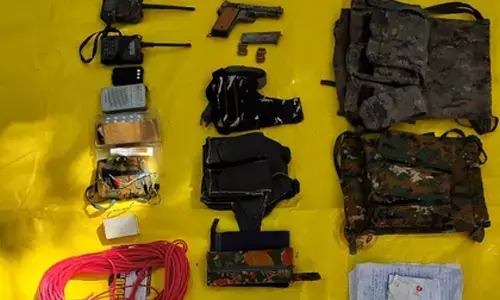Balachandar Ramalingam on revolutionizing manufacturing with AI-driven component management

In this exclusive interview, Balachandar Ramalingam discusses his groundbreaking work in implementing an AI-based 3D Data Classification and Standardization System, transforming global manufacturing processes and setting new benchmarks in operational efficiency.
In this exclusive interview, Balachandar Ramalingam discusses his groundbreaking work in implementing an AI-based 3D Data Classification and Standardization System, transforming global manufacturing processes and setting new benchmarks in operational efficiency.
Could you walk us through the core of the AI-driven transformation you led in component management?
Certainly. The transformation began with a need to address the complexities of managing product portfolios across global operations. Legacy systems were struggling with accurate component classification, which led to inefficiencies like redundant inventory and long procurement cycles. To solve this, we developed an AI-based 3D Data Classification and Standardization System. The core idea was to create a unified platform that could intelligently classify components using shape-based search algorithms, improving how teams across the world identified and reused components.
What role did AI play in this transformation, and how did you ensure its success?
AI was the cornerstone of this project. We used machine learning models trained on extensive component datasets, which enabled us to improve the precision and scalability of the classification process. The success came from meticulous planning and collaboration with design engineers, data scientists, and supply chain experts. We also developed a centralized repository, which became the single source of truth for standardized component data, ensuring consistency across global operations. AI helped reduce redundancies, improve accuracy, and expedite the procurement process.
Can you share some of the tangible outcomes and metrics that highlight the success of this project?
Absolutely. The initiative led to a 20% reduction in inventory costs through more accurate component identification and reuse. This translated into significant savings for the organization. Additionally, supply chain efficiency improved by 18%, driven by better component standardization. Most impressively, we saw a 10% improvement in overall profitability, as the system helped reduce procurement lead times and accelerated product development cycles.
What challenges did you face in implementing such a complex system, and how did you overcome them?
One of the main challenges was aligning global teams and ensuring the system was adopted effectively across different regions. It required constant communication and collaboration to ensure that everyone—from design engineers to manufacturing teams—was on the same page. Another challenge was ensuring the quality of training data. We invested time in validating data and refining the model, which was critical for the system’s success.
Looking ahead, what potential do you see for AI in the future of manufacturing?
The success of this project opens the door to many more possibilities. AI can drive further innovations in areas like predictive maintenance, supply chain optimization, and real-time quality control. The key will be continuous improvement and adapting AI technologies to meet evolving business needs. I see AI as a catalyst for transforming the entire manufacturing landscape, helping organizations become more agile and efficient.
How has this project influenced your career, and what lessons have you learned from it?
This project has been a significant milestone in my career. It reinforced the importance of foresight, collaboration, and data-driven decision-making. One of the key lessons I’ve learned is that technological solutions, when aligned with business goals and global collaboration, can create lasting impact. It’s been a rewarding journey that has deepened my expertise in AI implementation and system deployment at a global scale.




















